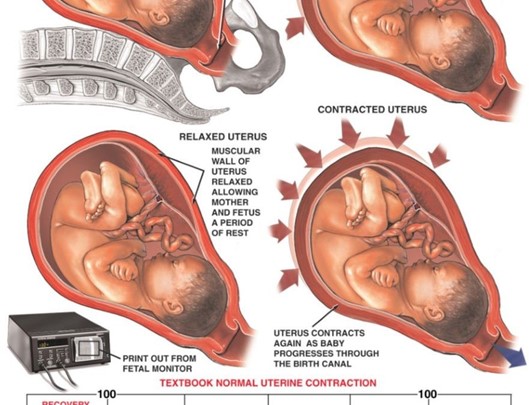A client in her third trimester reports sleeping poorly: sleeping on her back results in lightheadedness and dizziness and lying on her side results in no sleep.
Which suggestion for sleeping should the nurse prioritize for this client?
with a pillow under her right hip.
Without a pillow.
With a pillow under her shoulders.
with a pillow under both hips.
The Correct Answer is A
This is a variation of the side-lying position, which is recommended for pregnant women in the third trimester to improve blood flow to the uterus and the baby12.

Sleeping on the right side with a pillow under the hip can also help relieve pressure on the inferior vena cava, a large vein that carries blood from the lower body to the heart.
Sleeping on the back can cause lightheadedness and dizziness because of this pressure, as well as increase the risk of stillbirth1.
Choice B.
Without a pillow is incorrect, as this can make sleeping on the side uncomfortable and cause back pain or leg cramps.
Choice C.
with a pillow under her shoulders is incorrect, as this can elevate the upper body and worsen heartburn, a common problem in pregnancy.
Choice D.
with a pillow under both hips is incorrect, as this can make sleeping on the back more likely, which is not advised for pregnant women in the third trimester1.
Therefore, choice A is the best answer.
Nursing Test Bank
Naxlex Comprehensive Predictor Exams
Related Questions
Correct Answer is A
Explanation

This is a sign of uterine hyperstimulation, which can cause fetal distress and excessive bleeding12.
The nurse should report this finding to the provider and monitor the fetal heart rate and maternal vital signs.
Choice B.
Early decelerations in the FHR are incorrect, as this is a normal finding during the second stage of labor, indicating head compression.
Choice C.
Pelvic pressure with contractions is incorrect, as this is an expected finding during the second stage of labor, indicating that the baby is descending through the birth canal.
Choice D.
Bloody show from the vagina is incorrect, as this is also an expected finding during the second stage of labor, indicating cervical dilation and effacement13.
Therefore, choice A is the best answer.
Correct Answer is C
Explanation
This is an antibiotic ointment that is applied to the eyes of newborns to prevent ophthalmia neonatorum, a serious eye infection caused by gonorrhea.
Ophthalmia neonatorum can cause blindness if left untreated and can occur even if the mother does not have symptoms of gonorrhea.
Erythromycin is the only drug approved by the FDA for this purpose and is mandated in most states.
Choice A.
Nystatin is incorrect, as this is an antifungal medication that is used to treat oral thrush or diaper rash in newborns, not eye infections.
Choice B.
Ceftriaxone is incorrect, as this is an antibiotic injection that is used to treat systemic gonorrhea infections in adults or newborns, not eye infections.
Choice D.
Ofloxacin is incorrect, as this is an antibiotic eye drop that is used to treat bacterial conjunctivitis in older children and adults, not ophthalmia neonatorum in newborns.
Therefore, choice C is the best answer to this question.

Whether you are a student looking to ace your exams or a practicing nurse seeking to enhance your expertise , our nursing education contents will empower you with the confidence and competence to make a difference in the lives of patients and become a respected leader in the healthcare field.
Visit Naxlex, invest in your future and unlock endless possibilities with our unparalleled nursing education contents today
Report Wrong Answer on the Current Question
Do you disagree with the answer? If yes, what is your expected answer? Explain.
Kindly be descriptive with the issue you are facing.
